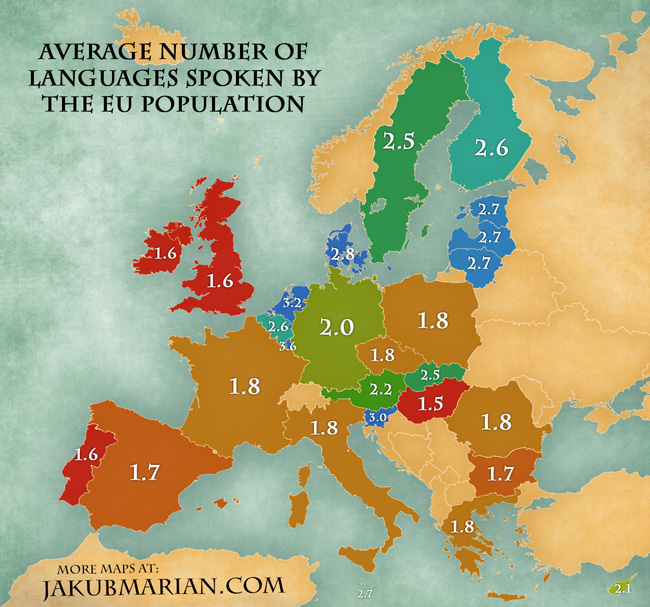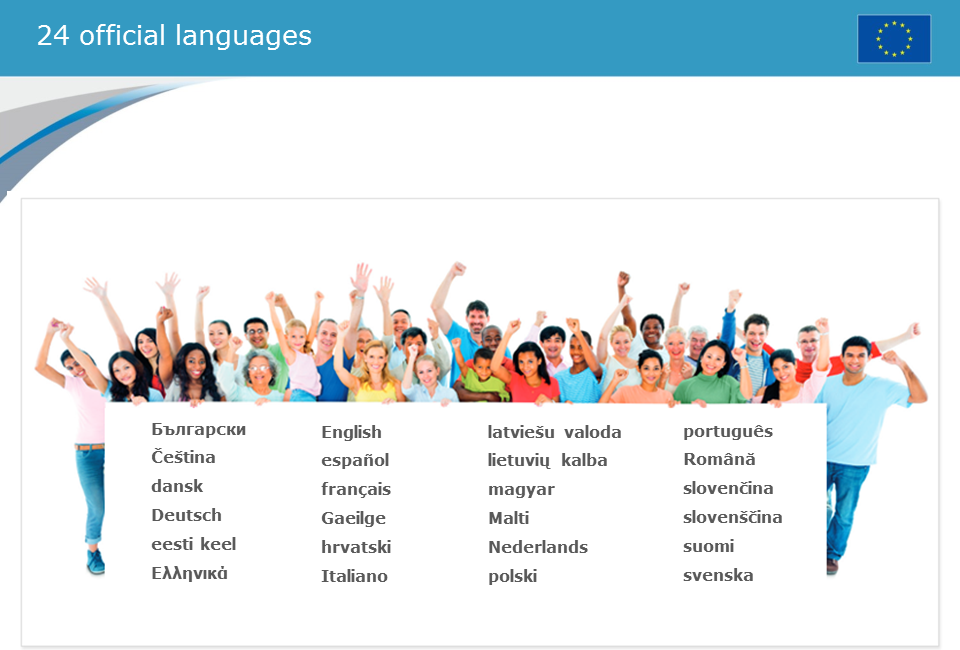Introduction
As we know, the European Union consists of 28 Member States, but do you know what’s the total number of official languages used across the community? The answer is: 24! So how precisely does the EU operate and function through this myriad of different languages, and what are people’s attitudes towards multilingualism in Europe? Let’s find out in this article!

The tower of Babel
The official and working languages of the EU, as well as a “shift” from French as the main language into English
Firstly, within the EU institutions, there are three working languages – French, German and English – with the interpretation or translation of most meetings and documents into all 24 official languages. However, the first official language policy of what was then the European Community identified Dutch, French, German, and Italian as the official working languages of the EU. In early 1990s, French became clearly the most important language in Brussels (which was and still is the Capital of the EU). French was the only language allowed in the European Commission’s pressroom, while most legislation was drafted in French and it was impossible to do business in the city without it.

The 24 official languages of the EU in their own languages – can you figure out which is which?
However, since then, as more countries have become part of the EU, the number of official and working languages has increased. However, there are fewer official languages than Member States, because some share common languages. The enlargement of the EU included many where English is usually the most important second language. And so, English has effectively “toppled” French, and in the space of one generation, English has become the continent’s lingua franca that is the case for today.

You see signs like these quite often across Europe nowadays
On the other hand, some regional languages, such as Catalan and Welsh, have gained a status as co-official languages of the European Union. The official use of such languages can be authorised on the basis of an administrative arrangement concluded between the European Council and the requesting Member State.
“So why do so many languages need to be kept”, you may ask?

How about this?
The European Commission maintains the policy that all EU citizens have the right to access all EU documents in the official language(s) of the Commission, and should be able to write to the Commission and receive a response in their own language. In high-level meetings between Member States, the participants are able to use their own language when they take the floor, rather than to have an enforcement of a certain language to be used. This is based on a principle of mutual respect and represents cultural diversity in the community, and this forms an important foundation of the EU.

Interpretation services are always available in a conference at the European Parliament
According to the Eurobarometer report in 2012, linguistic and cultural diversity is still very much celebrated within the European community. Although educational and language policies are the responsibility of individual member states, the community “is committed to safeguarding this linguistic diversity and promoting knowledge of languages, for reasons of cultural identity and social integration and cohesion, and because multilingual citizens are better placed to take advantage of the economic, educational and professional opportunities created by an integrated Europe. A mobile workforce is key to the competitiveness of the EU economy.”
But is the EU becoming more monolingual/English-dominant?
According to a Eurobarometer poll in 2012, English is spoken by 38% of Europeans, compared to 12% for French and 11% for German. A quarter can read a newspaper, understand TV news or communicate online in English. About 5% can do so in French. Over two-thirds of respondents said English was one of the two most useful languages, compared to 17% for German and 16% for French. This poll further finds that 69% of Europeans think they should be able to speak a common language.

So for the first time since the Roman Empire Europe now has a language a large chunk of its people can converse with each other in. While cultural diversity is still present, many think that this is something to be celebrated, not scorned. “It makes travel smoother, communication quicker and doing business easier. But most of all, it allows Europeans to connect with each other.” says Gareth Harding, Managing Director of Clear Europe.

In major European cities these days, you will find many people able to speak to you in English, which has not always been the case until the past decade or two. Despite the fact that French enjoyed its elevated status as once the most important language in Europe, many evidence point towards the fact that English is the language of the present and future. Four out of five Europeans believe it is important for their children to learn English, compared to 20% for French – down 13% in the last decade.
So do people still value multilingualism in the European Union?

The cost of multilingualism in EU institutions is over €1 billion a year and will increase as the EU takes in new members. This includes permanent staff of 1,750 linguists and 600 support staff in the European Commission, which has one of the largest translation services in the world, bolstered by a further 600 full-time and 3,000 freelance interpreters.
Yet, despite this seemingly high financial cost of maintaining this large translation service, according to the same Eurobarometer poll in 2012, almost all Europeans (98%!) think that learning at least one foreign language is important for the future of their children. And the current generation is itself well on the way towards that goal: with 46% of the population, monolingual Europeans are now in the minority. 19% of Europeans are bilingual, 25% are trilingual and 10% speak four or more languages.

This image went viral on the internet in October 2014
The European policy objective of a trilingual population (national language, English, another language) is already met by the majority of the population in Luxembourg (84%), the Netherlands (77%), Slovenia (67%), Malta (59%), Denmark (58%), Latvia (54%), Lithuania (52%) and Estonia (52%). By contrast, the countries furthest away from this objective include Portugal and Hungary (13% in each), the UK (14%) and Greece (15%).

Looking at where Europeans are now in terms of knowledge of languages and relating it to where they want their children to be, there is much optimisim about a multilingual Europe that will continue strongly in the future.
And finally, watch this entertaining video below to sum-up what you’ve learned above!
Sources and further reading:
Multilingual Europe by Language on the move – http://www.languageonthemove.com/language-learning-gender-identity/multilingual-europe
EU: 28 countries, one common language by EUObserver – https://euobserver.com/opinion/128249
Official languages of the EU by the European Commission – http://ec.europa.eu/languages/policy/linguistic-diversity/official-languages-eu_en.htm

